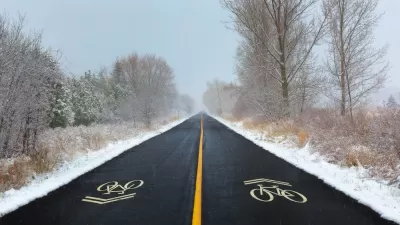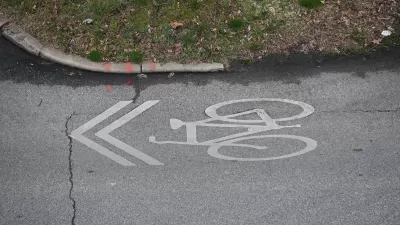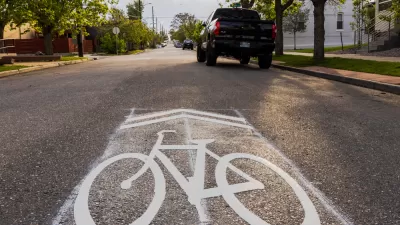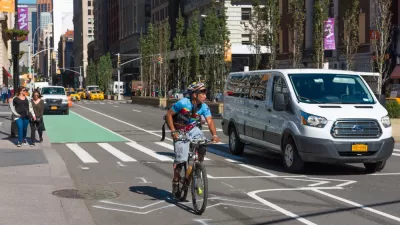The lane marking was meant to raise awareness and instill shared respect among drivers and cyclists. But their inefficiency has led supporters to denounce sharrows, pushing instead for more robust bike infrastructure that truly protects riders.

Dave Snyder, senior director for infrastructure at PeopleForBikes and the former executive director of the California Bicycle Coalition, was an early and enthusiastic supporter of the sharrow, a lane marking designed to make drivers aware that they are sharing space with bikes and encourage people on bikes to claim the lane rather than riding in the dangerous ‘door zone.’
According to Snyder, “I thought the sharrow would educate bicyclists to stay out of the ‘door zone’ and usher in a new era of safer streets, one where motorists would patiently wait behind bicyclists ‘taking the lane’ because this painted symbol made it clear they had the right to do so.” But Snyder admits the markings are clearly not enough to change behavior. “Sharrow or no sharrow, most people on bikes dangerously hug the edge of the roadway, squeezing themselves into the door zone to avoid blocking car traffic.” Now, after two decades of data and lived experience, Snyder believes that sharrows “are great for navigation and, perhaps, concentrating riders on certain streets — that’s about it.”
If anything, Snyder points out that sharrows have an unintended effect that is “insulting” to the bike-riding public: “They allow officials to take credit for doing something for bicycle safety without impacting car traffic, even though that something is next to nothing.”
Snyder emphasizes that bike advocates like him and his current organization, PeopleForBikes, now acknowledge the failures of sharrows and have stopped recommending them. “Today, we know so much more about what it takes to make our streets safer for bicycling. We need separate bike paths; we need protected bike lanes on busy roads; and where the lanes are shared, we need actual speeds reduced to 20 mph or slower.”
FULL STORY: Big Admission: ‘I Was Wrong About Sharrows’

Study: Maui’s Plan to Convert Vacation Rentals to Long-Term Housing Could Cause Nearly $1 Billion Economic Loss
The plan would reduce visitor accommodation by 25,% resulting in 1,900 jobs lost.

Alabama: Trump Terminates Settlements for Black Communities Harmed By Raw Sewage
Trump deemed the landmark civil rights agreement “illegal DEI and environmental justice policy.”

Why Should We Subsidize Public Transportation?
Many public transit agencies face financial stress due to rising costs, declining fare revenue, and declining subsidies. Transit advocates must provide a strong business case for increasing public transit funding.

Paris Bike Boom Leads to Steep Drop in Air Pollution
The French city’s air quality has improved dramatically in the past 20 years, coinciding with a growth in cycling.

Why Housing Costs More to Build in California Than in Texas
Hard costs like labor and materials combined with ‘soft’ costs such as permitting make building in the San Francisco Bay Area almost three times as costly as in Texas cities.

San Diego County Sees a Rise in Urban Coyotes
San Diego County experiences a rise in urban coyotes, as sightings become prevalent throughout its urban neighbourhoods and surrounding areas.
Urban Design for Planners 1: Software Tools
This six-course series explores essential urban design concepts using open source software and equips planners with the tools they need to participate fully in the urban design process.
Planning for Universal Design
Learn the tools for implementing Universal Design in planning regulations.
Smith Gee Studio
Alamo Area Metropolitan Planning Organization
City of Santa Clarita
Institute for Housing and Urban Development Studies (IHS)
City of Grandview
Harvard GSD Executive Education
Toledo-Lucas County Plan Commissions
Salt Lake City
NYU Wagner Graduate School of Public Service





























